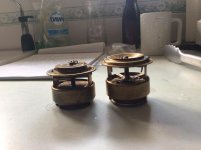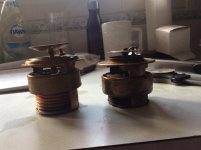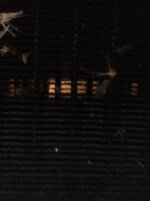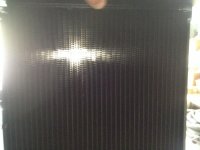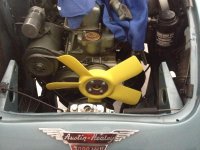RAC68
Darth Vader
Offline
Hi All,
Here is a document "I Always Wanted a COOL Car" that I first wrote for our club and posted here a number of times.
https://drive.google.com/file/d/0Bwqddve6a2OTN2tlUHk2SWZPT1k/view?usp=sharing
Shortsguy1, to answer your question. Due to the Healey's design, sealing the engine compartment would be impractical, if not impossible, but sealing the radiator bulkhead would be difficult enough. Although I don't think you would incur additional issues if your efforts were successful, I have been wrong before (just ask my wife).
I have a TR7 roadster that was designed with an engine tub and a sealed radiator bulkhead. After modifying the engine, I removed the faulty air conditioning (a large York compressor) but left the 2 auxiliary fans which were mounted low and angled up toward the radiator (air streams hit the radiator fins on an angle for the greatest of cooling contact). I then eliminated the engine-driven multy-bladed fan, leaving only the 2 thermostatically controlled auxiliary A/C fans. With the louvered bonnet allowing easy hot-air escape, the car stays COOL even in a summer shore traffic jam or at a long traffic lights.
Hope you find something useful.
Ray(64BJ8P1)
Here is a document "I Always Wanted a COOL Car" that I first wrote for our club and posted here a number of times.
https://drive.google.com/file/d/0Bwqddve6a2OTN2tlUHk2SWZPT1k/view?usp=sharing
Shortsguy1, to answer your question. Due to the Healey's design, sealing the engine compartment would be impractical, if not impossible, but sealing the radiator bulkhead would be difficult enough. Although I don't think you would incur additional issues if your efforts were successful, I have been wrong before (just ask my wife).
I have a TR7 roadster that was designed with an engine tub and a sealed radiator bulkhead. After modifying the engine, I removed the faulty air conditioning (a large York compressor) but left the 2 auxiliary fans which were mounted low and angled up toward the radiator (air streams hit the radiator fins on an angle for the greatest of cooling contact). I then eliminated the engine-driven multy-bladed fan, leaving only the 2 thermostatically controlled auxiliary A/C fans. With the louvered bonnet allowing easy hot-air escape, the car stays COOL even in a summer shore traffic jam or at a long traffic lights.
Hope you find something useful.
Ray(64BJ8P1)
Last edited:

 Hi Guest!
Hi Guest!

 smilie in place of the real @
smilie in place of the real @
 Pretty Please - add it to our Events forum(s) and add to the calendar! >>
Pretty Please - add it to our Events forum(s) and add to the calendar! >> 
